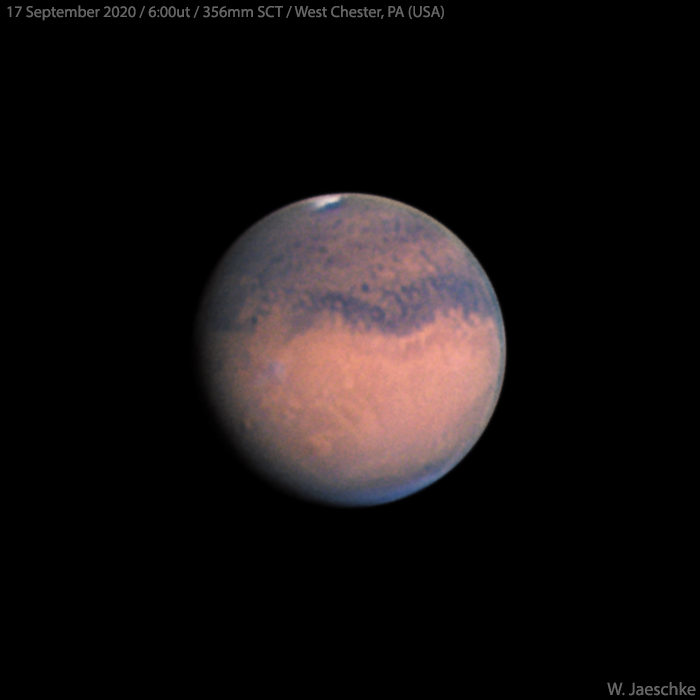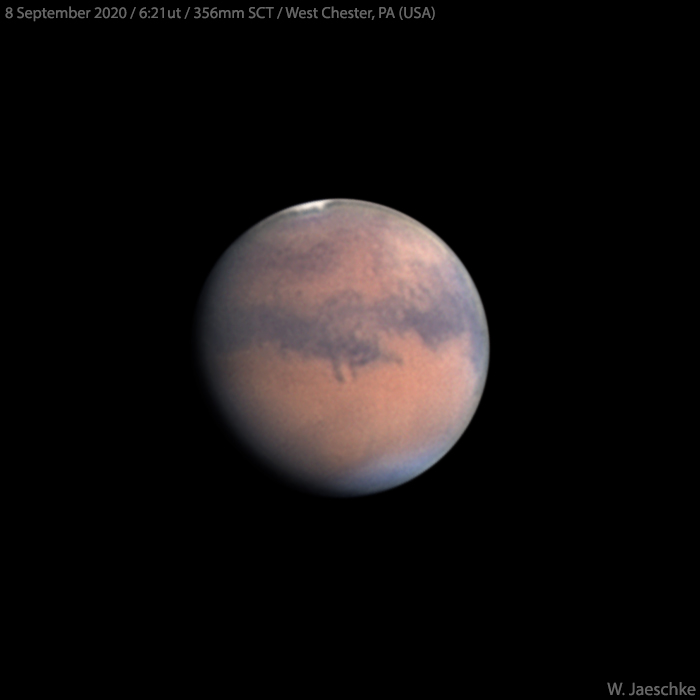Mars will reach opposition on December 8, 2022. For Northern observers, it will sit very high in the sky, making it an excellent target for astrophotography over the next few months. While it will not reach the large apparent diameter of the 2020 apparition (see photos below), it’s high altitude should make very high-resolution images possible for northern observers.
Imaging Mars is somewhat more challenging thank Saturn and Jupiter. First of all, Mars is a much small target during much of its long apparitions, and only grows to under half the apparent diameter of Jupiter during its largest oppositions.
Because Mars is smaller and is dominant in the red (longer) wavelengths, its altitude in the sky is important. At lower altitudes, blue (shorter) wavelengths are spread more due to atmospheric distortions, so an atmospheric dispersion corrector can be very helpful during apparitions where Mars will not exceed 45-50 degrees altitude. So, you’ll want to plan your sessions to try and image Mars when its at the highest point in the sky each evening, and setup your imaging train accordingly.
Since Mars is small, forget about oversampling rules and pixel sizes. Many imagers, including Damian Peach, have shown over the years that using a long focal length on Mars can produce more detail than sticking theoretical limits. The flip side of that coin is that longer focal lengths spread the light coming through your aperture across more pixels on your sensor. There’s no free lunch — small and brighter or big and dimmer. If your aperture is large or your camera is extremely sensitive (or preferably both), high frame rate captures can be made at a large image scale. If the seeing is good enough, your scope is well collimated, and the focus is correct, excellent high-resolution imaging is possible.
The images below were taken through a 14″ Schmidt Cassegrain telescope at a focal length of about 7,800mm on a sensor with small (2.9um) pixels. On a sensor with larger pixels, such as the ASI174. I use a focal length of about 11,000mm to achieve a similar image scale. The smaller pixels are preferable, due to the sensitivity of the ASI290m and small pixels size allowing for less magnification and putting more light on the sensor.
Here are some images from the 2020 apparition — notice how deep red the planet was on October 6, the day Mars was at opposition. This is a similar phenomena to the Seelinger Effect that we typically associate with Saturn rings brightening around opposition because they are reflecting light directly back at us.


